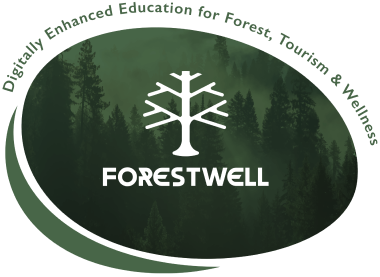Topic Progress..
Forests in Common: Learning from diversity of community forest arrangements in Europe. Europe boasts a rich array of community forest arrangements. This paper explores these diverse forms inclusively by examining 15 cases from Italy, Scotland, Slovenia, and Sweden using reflexive grounded inquiry. We analyse them across four dimensions—forest, community, their interrelationships, and their connections to broader society—identifying 43 subdimensions. Our findings highlight how these arrangements contribute to collective natural resource management and challenge the traditional divide between ‘communities of place’ and ‘communities of interest’. They demonstrate multilevel environmental governance, shaped by historical and environmental pressures, and enhance society’s connection with nature and adaptive capacity.https://link.springer.com/article/10.1007/s13280-020-01377-x
Community 4 Tourism The project Community 4 Tourism (C4T) is part of the activities of the thematic community of the Interreg Euro-MED program on sustainable tourism. It aims to contribute to the improvement of European and transnational territorial cooperation by targeting objectives concerning the strengthening of sustainable tourism in the Mediterranean area and the transition towards a resilient and climate-neutral society.https://planbleu.org/en/projects/community-4-tourism/
FOREST EUROPE is a Pan-European voluntary high-level forest policy process. Since 1990, the aim has been to develop common strategies for the 46 signatories (45 European countries and the EU) on how to protect and sustainably manage forests. The FOREST EUROPE Sustainable Forest Management (SFM) definition and set of criteria and indicators are internationally regarded as guidelines for SFM. Every four to five years, Ministers responsible for forests meet to endorse new declarations, decisions and resolutions. These commitments serve as a framework for implementing SFM, adapted to the national circumstances, but with a regional approach to strengthen international cooperation. https://foresteurope.org/about/members/
The European Partnerships co-funded and co-programmed under the second Horizon Europe Strategic Plan involve collaborative efforts to address key research and innovation challenges in Europe. This paper is design to bring together public and private stakeholders to pool resources and expertise, aiming to drive progress in critical areas such brain health, forest and forestry for a sustainable future and resilient cultural heritage. By aligning with the Horizon Europe Strategic Plan, these partnerships seek to advance Europe’s global competitiveness and tackle complex issues through coordinated research and innovation efforts. https://research-and-innovation.ec.europa.eu/system/files/2023-07/ec_rtd_candidate-list-european-partnerships.pdf
The European Market Potential for Nature Tourism 2023 talks about nature-based tourism as one of the fastest-growing tourism sectors. The focus is on travel for the purpose of enjoying natural areas and biodiversity on land, water, ice or even snow/ice. Nature-based tourism can take many different forms, including forest wellbeing, wildlife watching, birdwatching, ecotourism, walking, cycling, fishing, adventure trips or sun and beach tourism. Nature-based tourism can also have the purpose of serving the community (community-based tourism, or CBT) or have scientific, academic, volunteering or educational (SAVE) goals. Within this niche, Germany, France, the Netherlands, Belgium, Poland and the Czech Republic are the most relevant European markets. https://www.cbi.eu/market-information/tourism/nature-tourism/market-potential
Green Force Care EU talks about Green for Health and Social Inclusion looking at forest based care, urban green care, social agriculture and green care tourism. https://www.greenforcare.eu/
